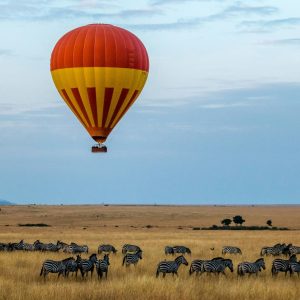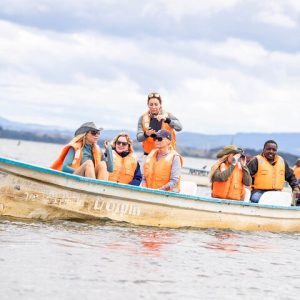Mount Kenya National Park
Mount Kenya National Park is a UNESCO World Heritage site located in central Kenya, approximately 150 kilometers north of Nairobi. It encompasses the country’s highest mountain, Mount Kenya, which is also the second-highest peak in Africa, after Kilimanjaro. The park covers an area of 715 square kilometers and offers breathtaking landscapes, including rugged glaciers, dense bamboo forests, alpine meadows, and stunning lakes.
Geography and Climate
Mount Kenya has three main peaks: Batian (5,199 meters), Nelion (5,188 meters), and Point Lenana (4,985 meters). While Batian and Nelion are popular among experienced climbers, Point Lenana is the most accessible peak for trekkers. The mountain’s glaciers, although rapidly shrinking due to climate change, are an important feature, and the park itself has an array of ecosystems, ranging from lowland forest to alpine moorlands.
The climate of Mount Kenya National Park varies with altitude. The lower slopes experience a more temperate climate with warm days and cool nights, while the higher altitudes are colder, with temperatures dropping significantly, especially at night. The park experiences two rainy seasons—long rains from March to June and short rains from October to December.
Flora and Fauna
The park is a biodiversity hotspot, home to a wide range of flora and fauna. Its forests and moorlands are characterized by unique plant species such as giant lobelias, groundsel, and the peculiar-looking tussock grass. The park’s varied habitats support diverse wildlife, including elephants, buffaloes, leopards, hyenas, and various primates like the colobus monkey. Birdwatchers can spot numerous bird species, including sunbirds, eagles, and the endangered Abbott’s starling.
Activities
Mount Kenya National Park offers a variety of activities for visitors:
- Trekking and Climbing: The park is popular for its hiking and climbing routes, with options for both experienced climbers and novice trekkers. The most commonly used routes are the Sirimon, Chogoria, and Naro Moru routes, each providing different scenic views and levels of difficulty.
- Wildlife Viewing: Safari walks and guided tours provide opportunities to see diverse wildlife in their natural habitats. The park’s dense vegetation makes it a unique environment for spotting elusive animals such as forest elephants and bushbucks.
- Camping: There are several campsites within the park, offering a unique experience of camping in the wild, surrounded by the park’s natural beauty.
- Bird Watching: With over 130 bird species recorded, the park is a paradise for bird enthusiasts.
Conservation Efforts
Mount Kenya National Park is protected by the Kenya Wildlife Service (KWS) and is considered a critical water catchment area for the country. It supplies water to millions of people and supports agriculture and hydroelectric power production. Conservation efforts focus on combating deforestation, controlling human-wildlife conflict, and protecting endangered species within the park. However, the region still faces challenges such as poaching, illegal logging, and the impacts of climate change
Cultural Significance
Mount Kenya holds cultural significance for the Kikuyu and Meru communities, who regard it as a sacred site. The Kikuyu people traditionally believed the mountain to be the home of their god, Ngai, and many local practices and traditions are connected to it.
Accessibility
The park is accessible from Nairobi via road, with several entry gates such as Naro Moru, Sirimon, and Chogoria. The park offers various accommodation options, including lodges, cabins, and campsites, catering to different budgets and preferences.
Mount Kenya National Park is a stunning natural wonder that combines outdoor adventure, rich biodiversity, and cultural heritage, making it a must-visit destination for nature lovers and adventure seekers alike.
Other Attraction Sites

Masai Mara
Best known for yearly Wildebeest migration, big cats and lots of wildlife

Amboseli
Known for peak views of Mt. Kilimanjaro and large herds of elephants

Ol Pejeta
The only place in Kenya for you to see Chimpanzee in the Sweetwater Chimpanzee Sanctuary

Lake Naivasha
Fresh water lake in Rift Valley best for boat ride and guided walking tour

Samburu
View the Samburu Special Five: Somali Ostrich, Beisa Oryx, Grevy’s Zebra, Reticulated Giraffe & Generuk